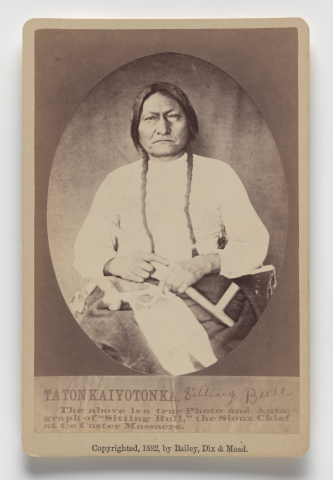
Tatanka Iyotanka (Sitting Bull) (c. 1831–1890)
Sitting Bull (Hunkpapa Lakota) was one of many Native leaders who resisted westward U.S expansion in the 1860s and 1870s. Lakota nations were affected during this period. In 1868, they signed the Second Treaty of Fort Laramie, which recognized the Black Hills as Lakota territory. In a violation of the treaty, the U.S. Army invaded the territory in 1876, which, along with their attempt to force all Lakota people to live on a reservation, ignited warfare.
After the Battle of Greasy Grass (the Battle of Little Bighorn) on June 25, 1876, the U.S. Army, led by Nelson A. Miles (right), pursued the Lakota who had followed Sitting Bull into Canada. In 1881, famine forced Sitting Bull to surrender. Miles would later lead the U.S. invasion of Puerto Rico in the War of 1898.
This photograph was taken while Sitting Bull was imprisoned for almost two years at Fort Randall.